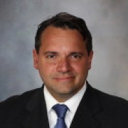Seizures and anticonvulsants after aneurysmal subarachnoid hemorrhage.
Palabras clave
Abstracto
Seizures and seizure-like activity may occur in patients experiencing aneurysmal subarachnoid hemorrhage. Treatment of these events with prophylactic antiepileptic drugs remains controversial. An electronic literature search was conducted for English language articles describing the incidence and treatment of seizures after aneurysmal subarachnoid hemorrhage from 1980 to October 2010. A total of 56 articles were included in this review. Seizures often occur at the time of initial presentation or aneurysmal rebleeding before aneurysm treatment. Seizures occur in about 2% of patients after invasive aneurysm treatment, with a higher incidence after surgical clipping compared with endovascular repair. Non-convulsive seizures should be considered in patients with poor neurological status or deterioration. Seizure prophylaxis with antiepileptic drugs is controversial, with limited data available for developing recommendations. While antiepileptic drug use has been linked to worse prognosis, studies have evaluated treatment with almost exclusively phenytoin. When prophylaxis is used, 3-day treatment seems to provide similar seizure prevention with better outcome compared with longer-term treatment.


